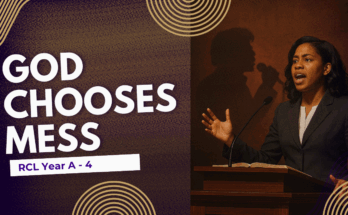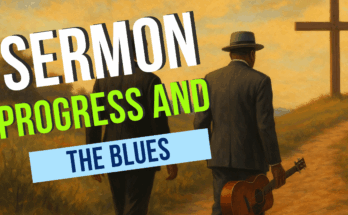As an Amazon Associate I earn from qualifying purchases.
Charles G. Adams provides a discussion of his sermon preparation method in Cleophus LaRue’s book Power in the Pulpit. It is detailed and comprehensive.
Sermon Preparation
Pastor Adams first emphasizes that prayer is at the beginning of the sermon. In addition, the preacher must have a text from the Bible and a subject from the preacher.
The first step is to take the text and read it in every translation possible. This includes reading it in the original language. At this stage you want to be sure not to use commentaries or other people’s sermons. That can stifle creativity. You write out your thoughts about your interaction with the text.
The next step is to consult as many commentaries on your scripture as possible. Here you are not reading sermons or “homiletical commentaries,” but commentaries on the language, history, and culture of the Biblical materials. You write out your notes at this stage.
The next step is to read homiletical commentaries and sermons. Here you have already dealt with the text from your own resources and the other commentaries, now you can see how others have dealt with the text in their sermonic expressions. Dr. Adams notes that he pays particular attention to the illustrations that the preacher used in the sermons he reads.
The next stage is to give time so that the materials from the previous steps can “marinate” in your mind. You leave the process altogether and do something entirely different.
The Drafts of Sermon
Now you are ready for the first Draft of the sermon. Simply write out your sermon. You then look at the draft and go back to the text again. You ask yourself if you were true to the text. You go back to your other materials and make sure that you have not made any mistakes. You refine the material over subsequent drafts as needed.
Then you want to relax away from the sermon again. And then attempt the final draft of the sermon. Adams notes that you must recognize that you will never be finished with the sermon, but you simply get your “final draft” before entering the pulpit.
Ready for the Presentation
Now the preacher must pray for God to be with the preacher in the preaching moment. Adams states, “Your information comes from the library, but your power and inspiration must come from the closet.”
The next step is to go and approach the pulpit to preach the Word. Your job is to preach “God’s name, God’s love, and God’s son.” You seek to make sure that they all hear the “good news.”
After the Sermon Presentation
 Now the preacher must come down from the mountaintop and think about what was done right and what was done wrong. Finally, the preacher should revise the sermon to prepare to preach it again.
Now the preacher must come down from the mountaintop and think about what was done right and what was done wrong. Finally, the preacher should revise the sermon to prepare to preach it again.
Conclusion
There are some very good gems in this method. However, I think that the beginning preacher might need more help in fleshing out some of the steps. For example, to begin the whole process, how does one get a sermon idea and/or a text? A process might be helpful.
In addition, I like the progression from “text alone” to “commentaries from experts” to “homiletical commentaries and sermons.” I also like the emphasis of what to look in the sermons from others, namely illustrations. However, I think that more guidance might be needed in how to exegete a text.
Be that as it may, Dr. Adams provides a comprehensive outline that takes you from the point when you have a scripture and an idea all the way to the point when you come out of the pulpit after having preached the sermon. He did all of this in 5 short pages. However, to put more meat on those bones, the preacher should consult other resources. You might be interested in my own ebook entitled You can Preach: Steps to an Effective Sermon which provides my own sermon preparation method.
Amazon and the Amazon logo are trademarks of Amazon.com, Inc, or its affiliates.





